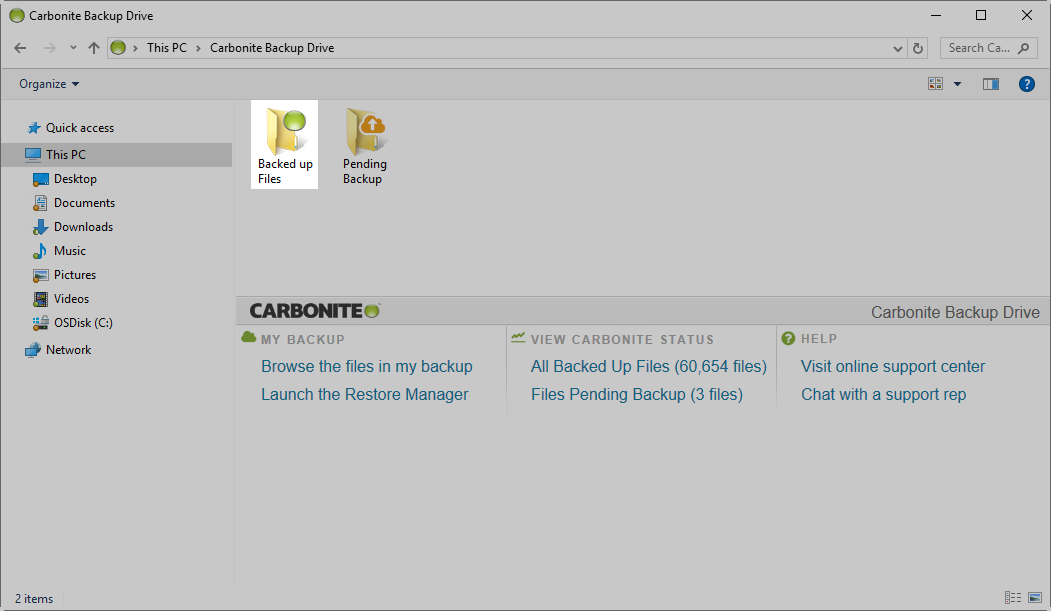Importing QuickBooks
Summary:
Carbonite backs up your QuickBooks data. Once restored, you can import the files back into the appropriate program. Please choose the scenario that best fits your situation.
This article applies to:
| Products | Platforms |
| Intuit QuickBooks | Windows |
Solution:
The sections below are collapsed. Please click a section title to open / close the appropriate section.
I still need to restore the files
How to Restore Your QuickBooks Data
In here we'll guide you through restoring your data and then on how to import it into the program. There are a couple of things that need to be in place for the restore and import to work.
- Ensure QuickBooks is installed on your computer.
- Ensure Recover Mode is enabled. This makes it so that no update to files or any new files are backed up to Carbonite while in this mode and it lets the restore run as smooth as possible.
Let's begin by opening the Carbonite Backup Drive through the File Explorer window (alternatively called Windows Explorer in older Windows operating systems). Do this by double-clicking the Carbonite Backup Drive icon.
You'll see the Carbonite Backup Drive displayed. This shows all of the files in your backupA set of copies of your files on our servers. organized the same way they are on your computer.
Double-click the Backed Up Files icon.
Browse to the location where your [program] data files are located (i.e. where it was when you backed it up).
Your QuickBooks company file data normally has the file extension of .QBW (QuickBooks Company File) and is typically stored in one of the following locations:
Windows XP
- C:\Documents and Settings\All Users\(Shared) Documents\Intuit\QuickBooks\Company Files\
Windows Vista, Windows 7, Windows 8, and Windows 10 with QuickBooks 2012 or newer
- C:\Users\Public\Public Documents\Intuit\QuickBooks\Company Files\
Windows Vista, Windows 7, Windows 8, and Windows 10 with QuickBooks 2010 or 2011
- C:\Users\Public\(Shared) Documents\Intuit\QuickBooks\Company Files\
Older versions of QuickBooks
- C:\Program Files\Intuit\QuickBooks\
Once the file's been restored, you can import it back into the program.
Restoring the Current Version
- In the Carbonite Backup Drive, right-click on the QuickBooks Company File and select Restore To....
- In the Browse for Folder window, select a location to restore and click OK.
Restoring an Older Version
- In the Carbonite Backup Drive, right-click on the QuickBooks Company File and select Restore previous versions...
- Select the version you want to restore, using the Last Saved On: and Size columns and then click Browse.
- Select a location that you wish to restore the file to and click OK.
- Click OK to start the restore.
I've already restored the data and need to import the files
To reassociate your QuickBooks files with the QuickBooks program, follow the steps below.
- Open QuickBooks
- Select File; Open or Restore Company...
- Select Open a company file and click Next
- Browse to the location where your QuickBooks data is located, depending on your Operating System, and click Open
Once you finish your restore and get your data back into the program, you're all set. If you want to resume your backup again, please exit Recover Mode.






 Feedback
Feedback